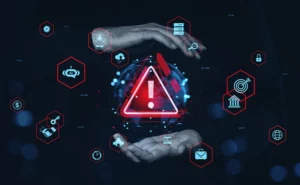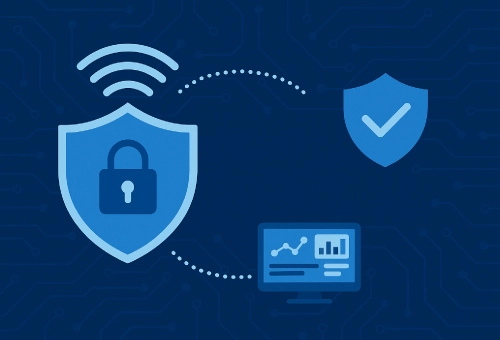
Forensic Readiness: A Crucial Element of Cybersecurity
For businesses operating across multiple environments, cybersecurity incidents are inevitable, making forensic readiness a crucial component of any organization’s cybersecurity strategy. Forensic readiness ensures that an organization is prepared to efficiently collect, preserve, and analyze digital evidence when a security incident occurs. This proactive approach not only facilitates swift incident response but also ensures legal and regulatory compliance, minimizes operational impact, and preserves an organization’s reputation.
This article examines the concept of forensic readiness, its importance to cybersecurity, and the steps required to achieve it. It also explores the cybersecurity frameworks that support forensic readiness and highlights real-world examples where forensic readiness improved incident response outcomes.
Forensic Readiness Definition
It is the ability of an organization to gather, preserve, and analyze digital evidence in a way that is technically sound, legally admissible, and operationally efficient. This preparation enables organizations to respond rapidly to cybersecurity incidents and ensures that the digital evidence collected can be used for legal, regulatory, or internal investigations.
The dual focus of forensic readiness combines Digital Forensics (the examination of system data to identify and attribute cyberattacks) and Incident Response (the detection, containment, and recovery from security breaches). Together, these practices ensure that an organization can react effectively to incidents while preparing for future challenges.
Importance of Forensic Readiness in Cybersecurity
- Swift Incident Response: It facilitates quicker response times to security incidents. By having the right tools and processes in place beforehand, organizations can immediately begin collecting and analyzing evidence, reducing the time needed to detect and contain threats.
- Regulatory Compliance: Many industries must comply with strict regulations concerning data protection (e.g., GDPR, HIPAA). Forensic readiness ensures that data collection and handling adhere to these regulations, minimizing the risk of non-compliance and associated penalties.
- Cost Savings: By proactively preparing for incidents, organizations can reduce the costs associated with data breaches and investigations. Proper forensic readiness can minimize operational disruptions, data loss, and the financial impact of legal proceedings.
- Reputation Management: A well-prepared organization is better equipped to handle security breaches, which can protect its reputation. Swift, effective incident response demonstrates to customers and stakeholders that the organization is capable of managing cybersecurity risks.
- Root Cause Analysis: It allows for thorough investigations to determine the cause of security incidents. By analyzing evidence efficiently, organizations can identify vulnerabilities, prevent future incidents, and strengthen their overall cybersecurity posture.
Key Steps to Implement Forensic Readiness
- Define Objectives and Scope: Clearly identify the reasons for implementing forensic readiness (e.g., legal compliance, cyber incident response) and establish its scope within the organization, such as which systems and departments will be involved.
- Develop a Readiness Policy: Create a comprehensive policy that outlines the organization’s approach to forensic readiness. This should include guidelines for evidence collection, preservation, and legal considerations, and should be aligned with existing cybersecurity and operational procedures.
- Identify Potential Evidence Sources: Map out all potential sources of digital evidence within the organization, such as network traffic logs, email archives, cloud services, and user devices. Ensure that there are systems in place to collect and preserve this data in a forensically sound manner.
- Establish Evidence Collection Mechanisms: Implement tools and systems to automate the logging, monitoring, and collection of critical data. This includes using security information and event management (SIEM) systems and ensuring evidence is stored securely to maintain its integrity.
- Train Key Personnel: Provide training for staff involved in incident response and digital forensics. This includes IT personnel, security teams, and legal advisors, who must understand how to collect, handle, and analyze digital evidence correctly.
- Set Up Incident Response Teams: Designate a team responsible for managing forensic investigations. This team should have clear communication channels and defined roles, ensuring collaboration between internal and external forensic experts during an incident.
- Regularly Test and Update the Plan: Conduct periodic tests, such as mock investigations, to ensure the forensic readiness plan remains effective. Regular reviews should account for new threats, changing regulations, and updates to the organization’s infrastructure.
- Legal and Compliance Considerations: Ensure that evidence collection and handling comply with local laws and international regulations. This is crucial for maintaining the admissibility of evidence in legal proceedings.
- Leverage Forensic Tools and Technology: Invest in digital forensic tools that assist in the collection and analysis of evidence. This includes forensic imaging tools, cloud forensics technologies, and systems tailored to specific environments, such as big data or cloud-based infrastructures.
Cybersecurity Frameworks Supporting Readiness
Several cybersecurity frameworks provide structured guidelines. These frameworks are designed to integrate digital forensics with incident response, ensuring organizations can manage incidents effectively.
Framework Name | Applicable Cybersecurity Environments | Issuing Body/Organization |
Digital Forensics and Incident Response (DFIR) | General IT, OT, hybrid environments (cyber incident response, forensic analysis) | National Institute of Standards and Technology (NIST), SANS Institute |
Cloud Forensic Readiness Framework | Cloud environments (IaaS, PaaS, SaaS) for cloud security and incident response | Various academic and industry bodies (e.g., Journal of Cloud Computing) |
ETHICore Framework | General IT cybersecurity environments (with ethical concerns like privacy and bias) | Developed through collaborative research (ETHICore group) |
NIST Cybersecurity Framework (CSF) | IT, OT, and Critical Infrastructure (cybersecurity risk management and forensic readiness) | National Institute of Standards and Technology (NIST) |
ISO/IEC 27037 | General IT environments (guidelines on identification, collection, and preservation of digital evidence) | International Organization for Standardization (ISO) |
Lets look at the 3 most implemented frameworks in detail.
- Digital Forensics and Incident Response (DFIR) Framework: The DFIR framework focuses on both digital forensics and incident response. It provides organizations with a structured approach to detecting, containing, and recovering from cybersecurity incidents while preserving evidence for legal and regulatory purposes.
- Cloud Readiness Framework: For organizations operating in cloud environments, this framework addresses the unique challenges of cloud forensics. It provides guidance on how to identify and preserve evidence in cloud systems while ensuring compliance with relevant regulations.
- ETHICore Framework: This framework integrates technical and ethical aspects of forensic readiness, addressing concerns such as data integrity, privacy, and the rapid evolution of technology. It includes multiple layers, each focusing on a different aspect of forensic readiness, from data acquisition to forensic analysis.
- Forensic Readiness in Big Data Environments: For organizations managing big data systems (e.g., Linux-Hadoop clusters), specialized frameworks exist to support forensic readiness without disrupting operations. These frameworks simplify the forensic investigation process, ensuring that evidence is collected and preserved efficiently.
Successful Implementation of Forensic Readiness
Several real-world examples demonstrate how readiness has significantly improved organizations’ incident response capabilities:
Cloud Forensic Readiness Framework: In a case study published in the Journal of Cloud Computing, a cloud-based organization implemented the Cloud Forensic Readiness Framework to manage evidence collection in their cloud infrastructure. As a result, the organization was able to respond to incidents more quickly, reduce investigation times, and improve compliance with cloud regulations.
DFIR in Operational Technology (OT) Environments: The National Institute of Standards and Technology (NIST) released a tailored DFIR framework for OT (Operational Technology) environments. Organizations using this framework have successfully reduced the time needed to identify and respond to cyberattacks, while preserving crucial evidence for both internal and legal investigations.
Conclusion
Forensic readiness is an essential element of a robust cybersecurity strategy. By proactively preparing to collect, preserve, and analyze digital evidence, organizations can reduce incident response times, ensure compliance, minimize operational impact, and safeguard their reputation. Implementing forensic readiness through recognized frameworks like DFIR, Cloud Forensic Readiness, and ETHICore helps organizations stay ahead of cyber threats and ensures they are prepared to handle any incidents that arise.
Latest
Blogs
Whitepapers
Monthly Threat Brief
Customer Success Stories
 USA
USA India
India APAC
APAC Middle East
Middle East Global
Global






 Facebook
Facebook Linkedin
Linkedin  X
X Youtube
Youtube






